Methods of contextualising | FEB.4-FEB.25
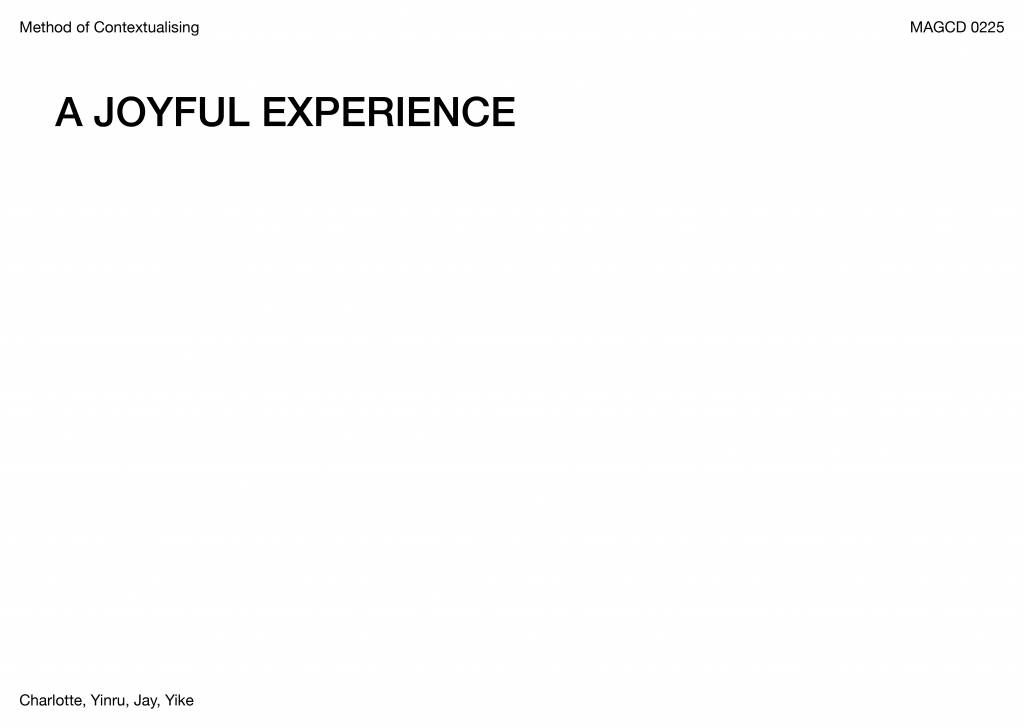
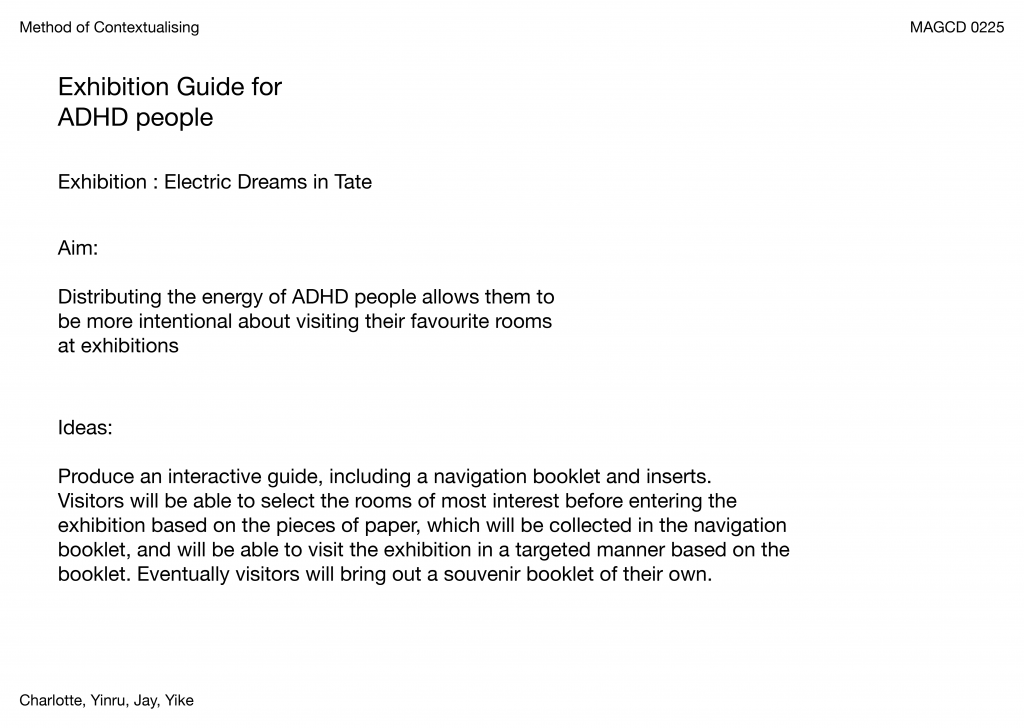
We chose Tate Modern’s special exhibition, Electric Dreams, as our case study. We also visited the exhibition in person. Since it’s focused on digital and electronic art, the space is filled with loud sounds, flashing lights, and intense visuals. Even for us—people without ADHD—it was sometimes hard to stay focused. So, we can imagine how much more challenging it would be for someone with ADHD to stay engaged throughout the entire exhibition.
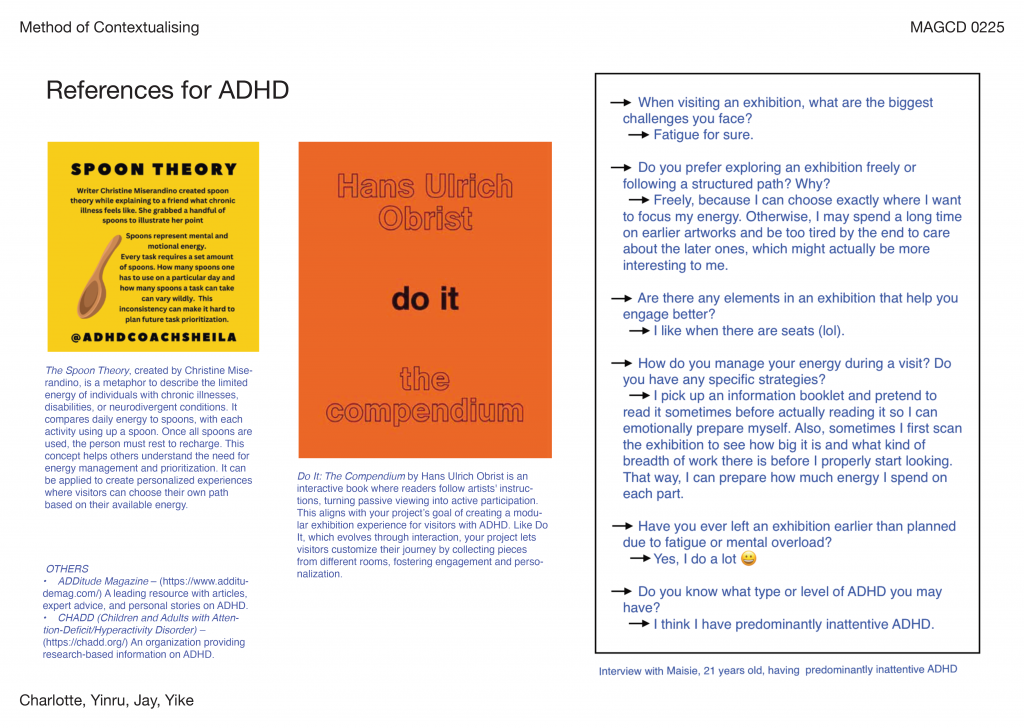
Our project is based on the Spoon Theory. In this theory, ‘spoons’ represent limited energy or mental resources. Everyone starts their day with a certain number of spoons, but people with ADHD have fewer spoons, and they use them up much faster. When visiting an exhibition, if they focus too hard from the beginning, they might feel exhausted by the later rooms, even if those rooms contain artworks they’re really interested in.
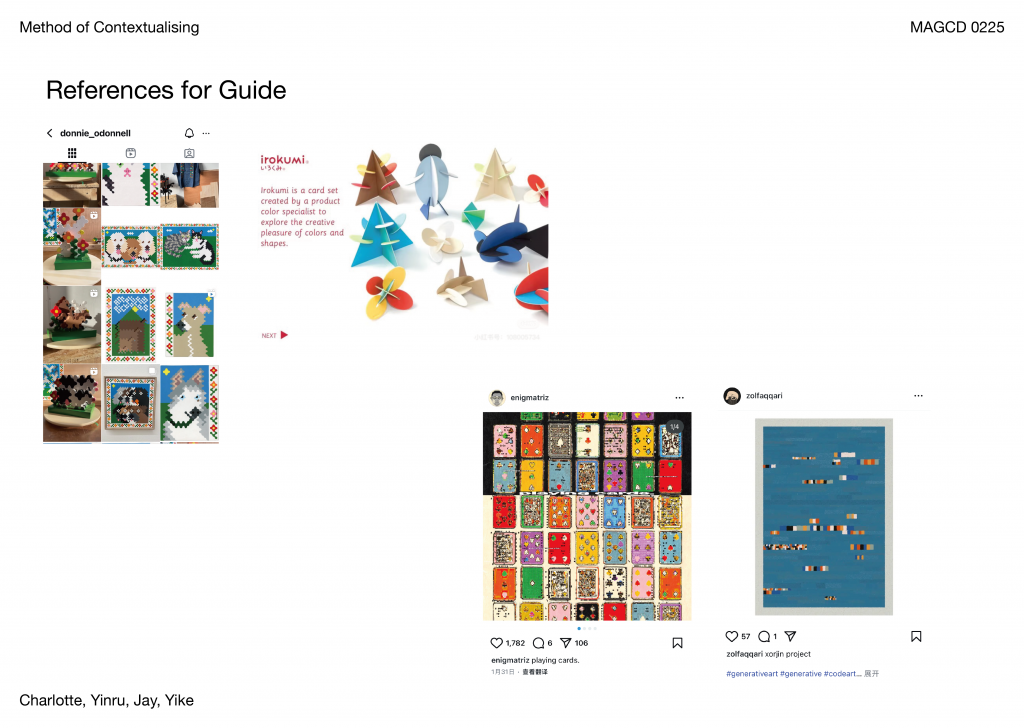
This week, we discussed how to merge our four different guide concepts into one. The new guide needs to have ADHD-friendly colors that match the exhibition, simple graphics, and interactive elements to make it fun. One of our ideas was inspired by puzzle toys. If we imagine the puzzle pieces as ‘spoons’ or energy units, visitors can pick their favorite pieces and attach them to their guide—just like managing their energy throughout the exhibition.
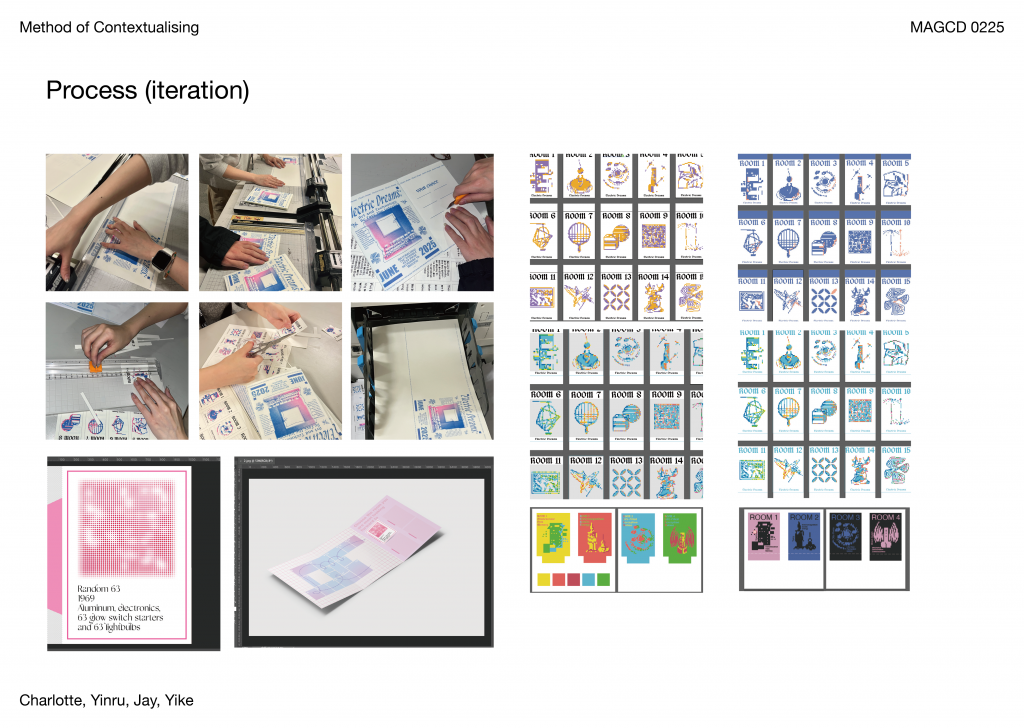
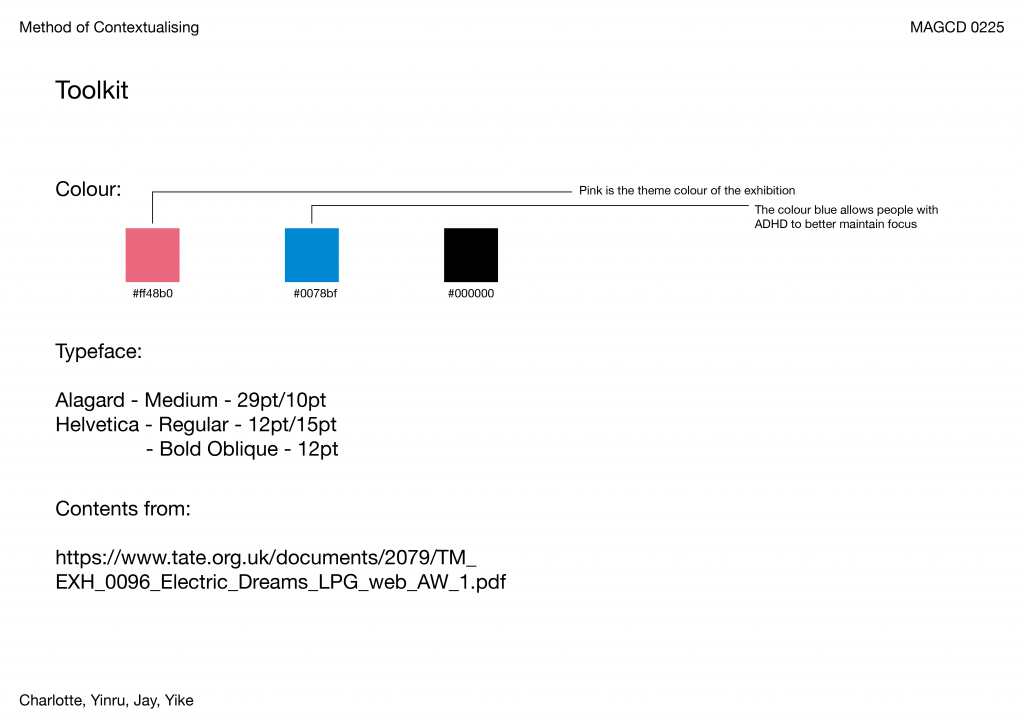
Our final outcome includes the exhibition guide, room selection pieces, and a poster.
The guide and puzzle pieces will be placed at the exhibition entrance. Before starting their visit, ADHD visitors can preview pixelated artworks on the cards and read simple descriptions on the back to select six rooms they’re most interested in. These selected rooms can be attached to the guide, helping them plan where to focus their energy during the visit. Afterward, the guide can also serve as a personal keepsake of the exhibition.
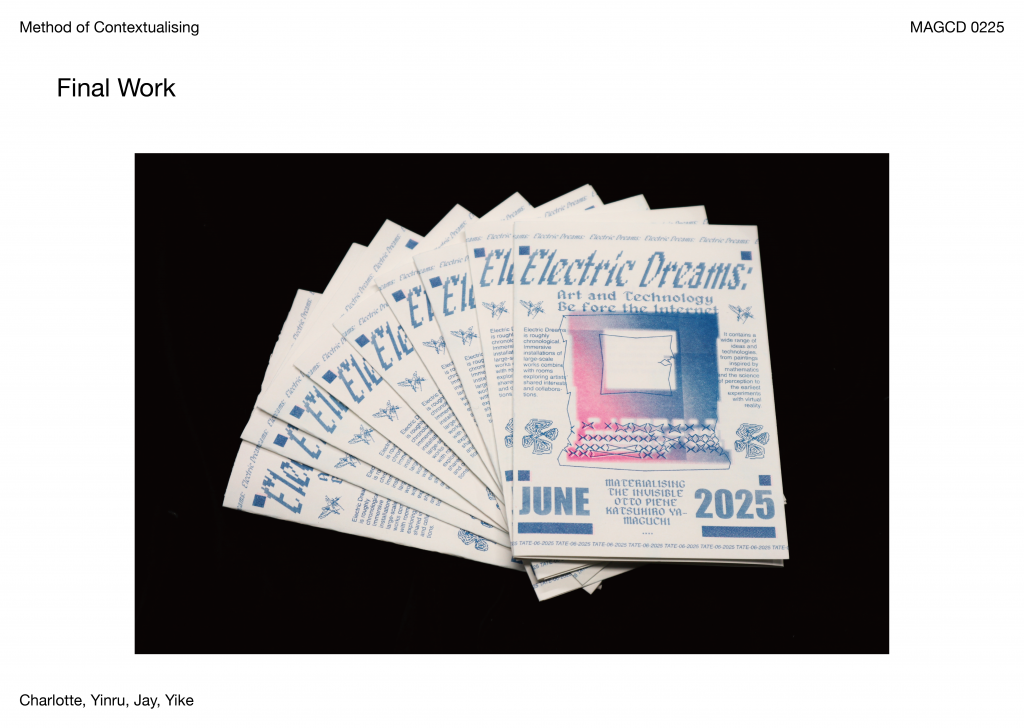
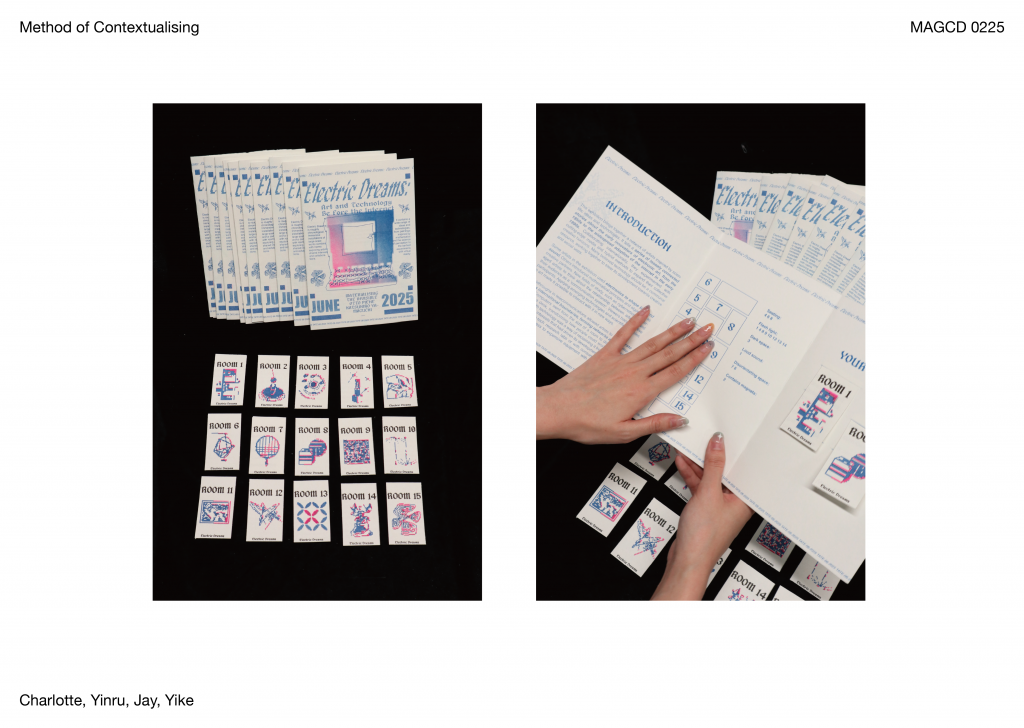
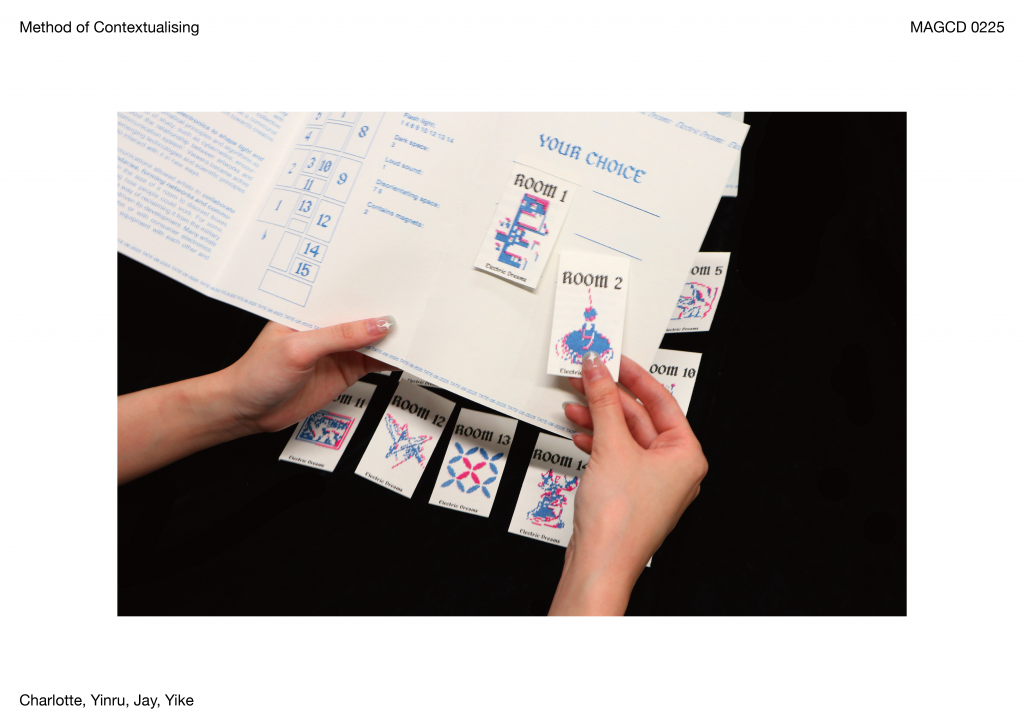
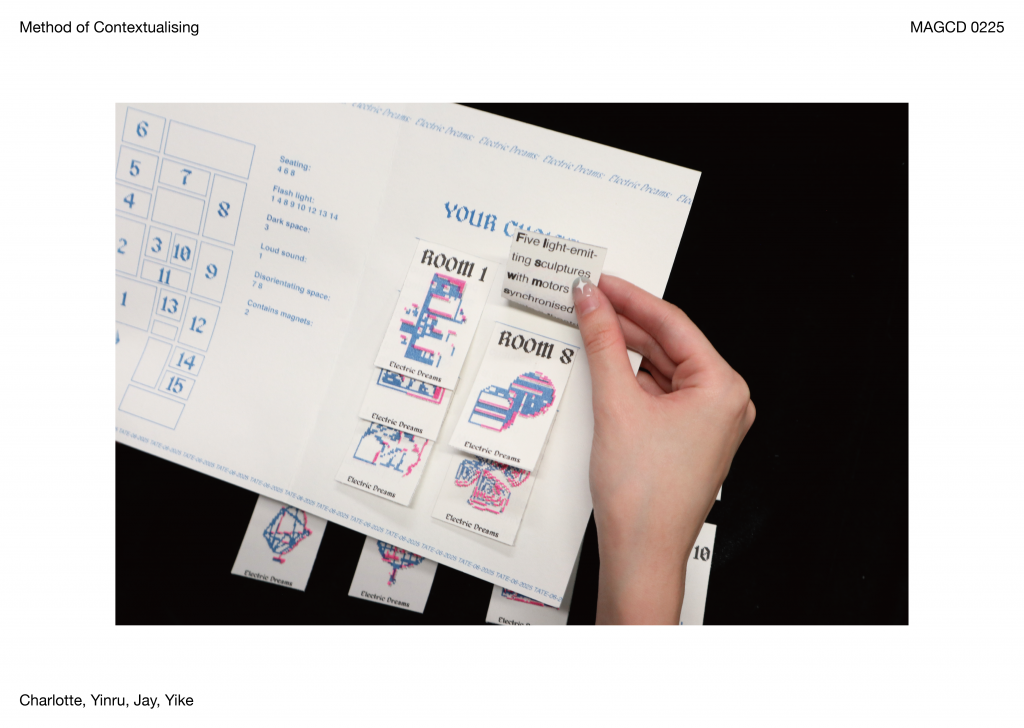
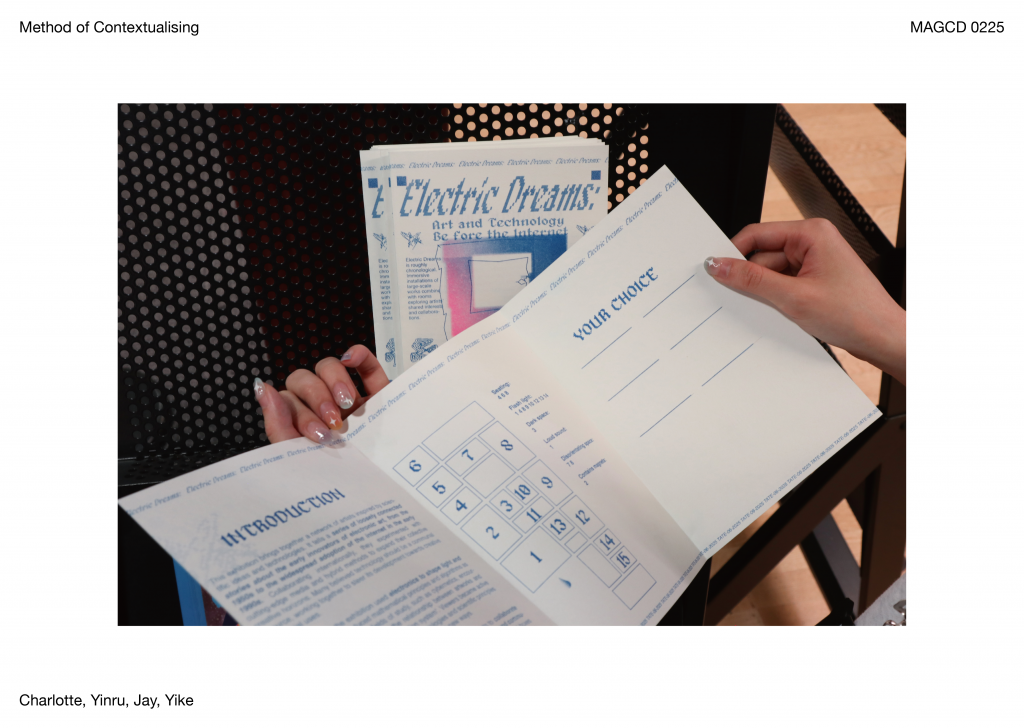
Written Respond
Feedback
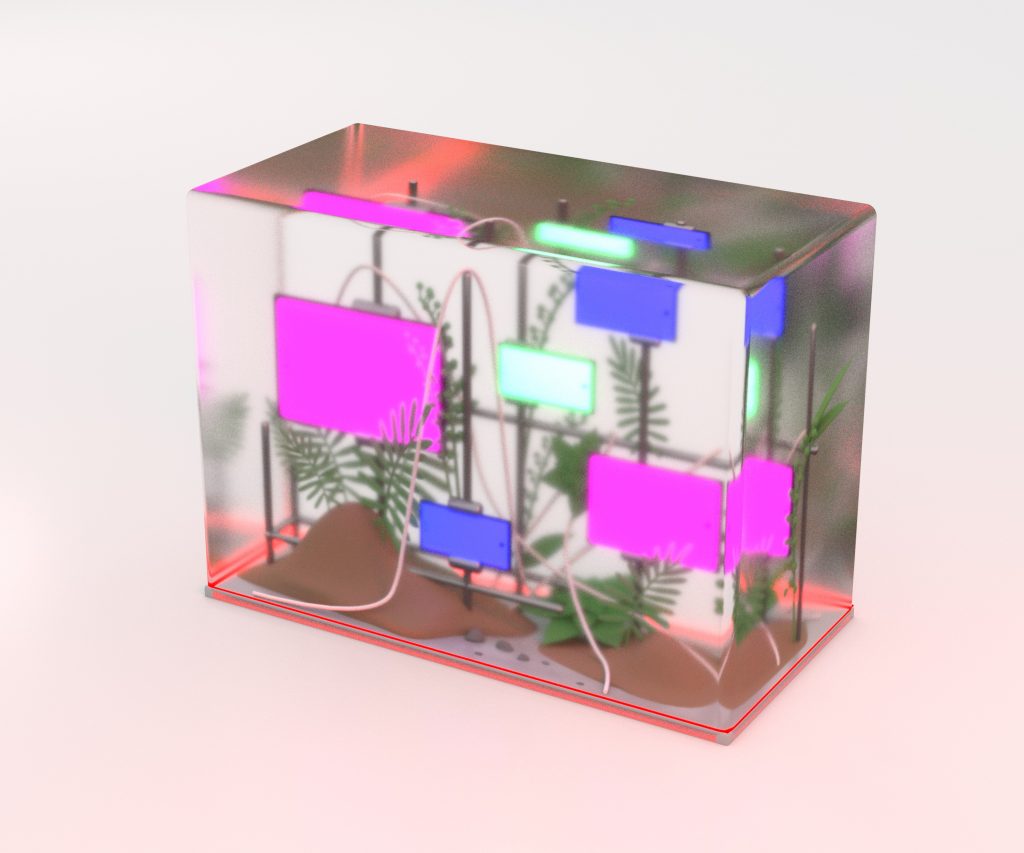
Leave a Reply